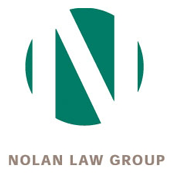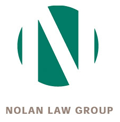In about a month, an airplane fitted with a new infrared detector will take to the skies over Europe to determine if airborne volcanic ash can be tracked and avoided. If the tests are successful, the detectors could – and this is an important caveat – could be eventually fitted to hundreds of airliners.
The UK-based carrier easyJet, Airbus, and the Norwegian Institute for Air Research (NILU) are collaborating on the development effort.
Budget airline easyJet is interested in an ash detector to end large-scale disruptions of flight schedules due to volcanic ash, as occurred with the recent eruption of Iceland’s volcano, Eyjafjallajökull. The volcano has erupted massively, pouring thousands of tons of ash into the sky. The ash is a hazard to jet engines, which melt the ash into a coating that clogs the engines and can cause them to cease functioning. Eyjafjallajökull last erupted in 1821, when it blew for 14 months. A similar occurrence is feared now, posing the threat of long-term flight disruption that could result in millions of frustrated passengers and the loss of billions of dollars to the airlines.
Ash cloud from Mt. Eyjafjallajokull (bottom center) disrupted air travel.
The system, known as AVOID, is intended to provide images of volcanic ash floating up to 60 miles (100 km) ahead of the aircraft at altitudes between 5,000 and 50,000 feet. AVOID is an acronym that stands for Airborne Volcanic Object Identifier and Detector. The infrared(IR) images are displayed in the cockpit, in what can be described as weather radar for ash, allowing pilots to adjust the airplane’s flight path to avoid any ash cloud. The imagery will also be transmitted to the airline operations center on the ground. This AVOID imagery would be used to build a 3D image of the volcanic ash cloud using real time data. This mapping would ostensibly open up large areas of airspace that would otherwise be closed during a volcanic eruption.
AVOID is promised to detect volcanic ash clouds with enough precision to avoid them.
Until recently, jet engine manufacturers had stipulated a zero ash tolerance for their engines, but this was changed in the aftermath of the Icelandic eruption when European aviation regulators, after consultation with engine manufacturers, introduced new measures that allowed airliners to fly through low density ash. The no-tolerance of ash policy of 50 years was overturned with this latest gambit. (See Aviation Safety Journal, ‘New Standard Permits Airlines to Fly Into Volcanic Ash’)
Andy Harrison, chief executive of easyJet, said in a 4 June press release on the AVOID system:
“This pioneering technology is the silver bullet that will make large-scale ash disruption history. The ash detector will enable our aircraft to see and avoid the ash cloud, just like airborne weather radars and weather maps make thunderstorms visible.”
Dr. Fred Prata is a scientist at NILU and is inventor of the system. He says, “AVOID enhances the theory around volcanic ash clouds with live data; easyJet is committed to bring our technology to life.”
Regulatory authorities are interested. Andrew Haines, chief executive of the UK’s Civil Aviation Authority (CAA) declared:
“It is essential that the aviation community works together to develop actions to minimize disruption, should ash return. The CAA welcomes the fact that airlines are considering innovations such as this and we will do all we can to facilitate them.”
In addition to CAA interest, certification of AVOID will come from the European Aviation Safety Agency (EASA).
The airline says it will spend £1 million ($1.5 million) on the development phase of AVOID. Cost of fleetwide installation is unknown.
Airbus will mount the system on one of its A340 test aircraft. Subject to the results of these tests, easyJet will install and operate a prototype on its own aircraft with a view to equipping enough of its fleet to minimize future disruption from ash.
In response to questions by e-mail, Prata said:
“We are hoping to test on the A340 within the next two months, but we also need some ash in the air. For this reason, we are also looking at using smaller, more flexible aircraft so that we can go farther afield without breaking the bank!
“Certification may take some time. We are looking at a minor modification initially, which I believe is easier.
“We haven’t discussed who will mass produce this. I guess, as a scientist, I would want to ensure that it all works as planned (although we have tested it on aircraft, it has never been mounted in a jet) and can detect the ash concentrations required. We think we can do lower than 20 times the current limit of 2 mg/m^3. Once we have gone through successful tests, I suppose a big avionics company might get involved. It will be too big for me and NILU!”
Based on the hurdles for certification, it may be anywhere from 3-8 years before AVOID receives supplemental type certification for installation on airliners flying with passengers. And fitting hundreds of airliners with AVOID, to include cockpit displays, downloading of imagery to ground stations (via existing aircraft telemetry, or another dedicated data channel?), etc. will involve considerably more expense than £1 million. After development and certification, the cost (including crew training in AVOID use) could climb to $100,000 each.
It is not clear how AVOID advances IR detection. Will tiny volcanic dust particles be at ambient air temperature and thus invisible to IR detection? These minute particles have no internal heat source and no heat storage capacity at all once entrained in their new downwind atmospheric environment. Or is sunlight reflected off the particles? If so, will AVOID work throughout the night-time hours?
If AVOID relies on an IR spectral fingerprint, scattered light would be detected by a CCD camera. There are questions about the technology, and whether it represents a breakthough. In a 2008 paper, Prata highlighted some of the difficulties and complications attendant to remote sensing of ash clouds:
“Context is a key element in determining whether a particular cloud is an ash hazard or not, and trained meteorologists tasked with identifying ash clouds will use multiple sources of information including satellite imagery, pilot reports, ground observer reports, wind trajectories and background information regarding regional activity and prior behavior.”
Sizing this “context” problem into one whose solution fits aboard an airliner is a non-trivial issue.
Even if pilots get real-time warning of volcanic ash at, say, 20 miles range, exactly how will such warning be coordinated with air traffic control (ATC). If aircraft all over the sky suddenly start requesting ad hoc route and altitude changes, ATC might get “a teeny bit tetchy and flustered” to put the matter in colloquial terms.
Deviations of many aircraft to avoid ash may create problems for ATC.
The perennial problem is of differentiating between dense ash containing the silicates that stops engines and light ash, which just clogs and goo’s the engines’ innards over time. The dense ash will show up from satellite viewing, on board sensing and by eyeball. Will light ash show up with necessary accuracy? Where will the current limits (2,000 and 4,000 micrograms per cubic meter) fit into AVOID’s capabilities?
Even at the 4,000 microgram concentration, the ash cloud may not be easily visible or detectable by IR. Presumably under optimum viewing conditions (e.g. daylight, sun behind the aircraft and shining towards the ash cloud) a concentration of ash at 4,000 micrograms might be visible. Whether the AVOID IR can get useful data under poor viewing conditions may be another matter. Good operational tests will tell. As far as has been publicly revealed so far, AVOID has yet to be tested using a horizontal view of an ash cloud at low densities – only relatively close to erupting volcanoes where the ash density is greater.
There may be a breakthrough here, but only solid operational testing with line pilots from the airlines will tell.

